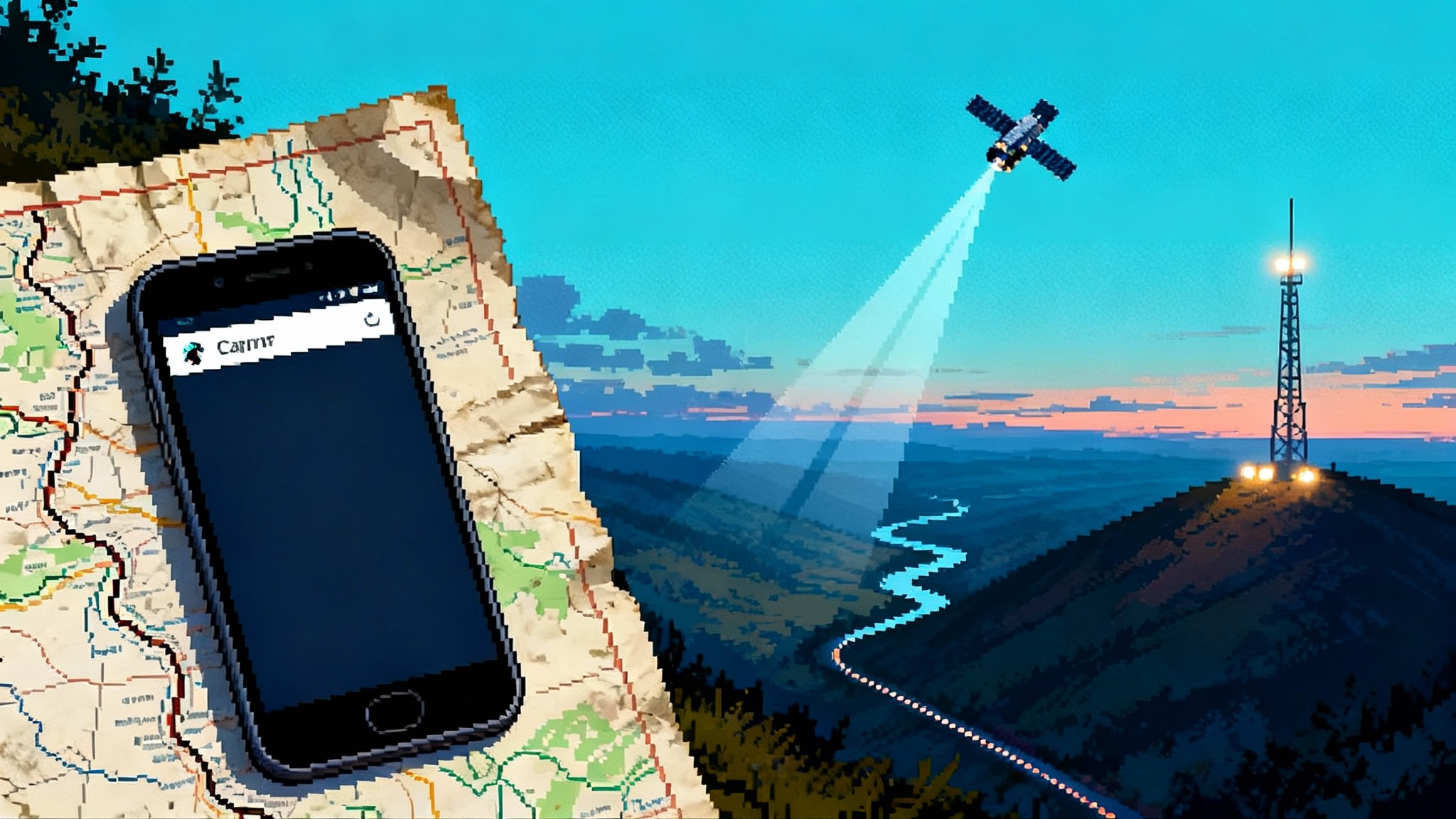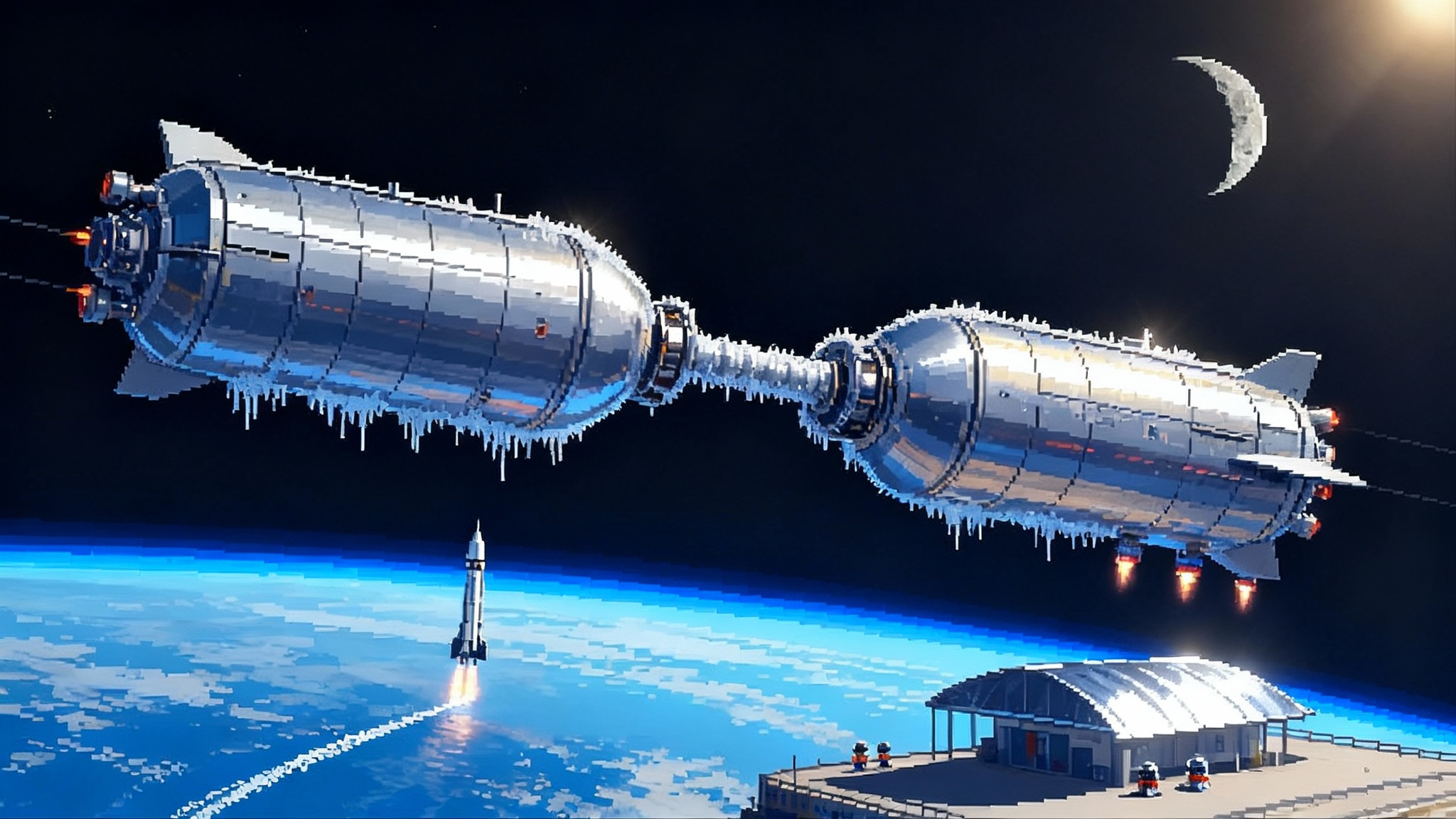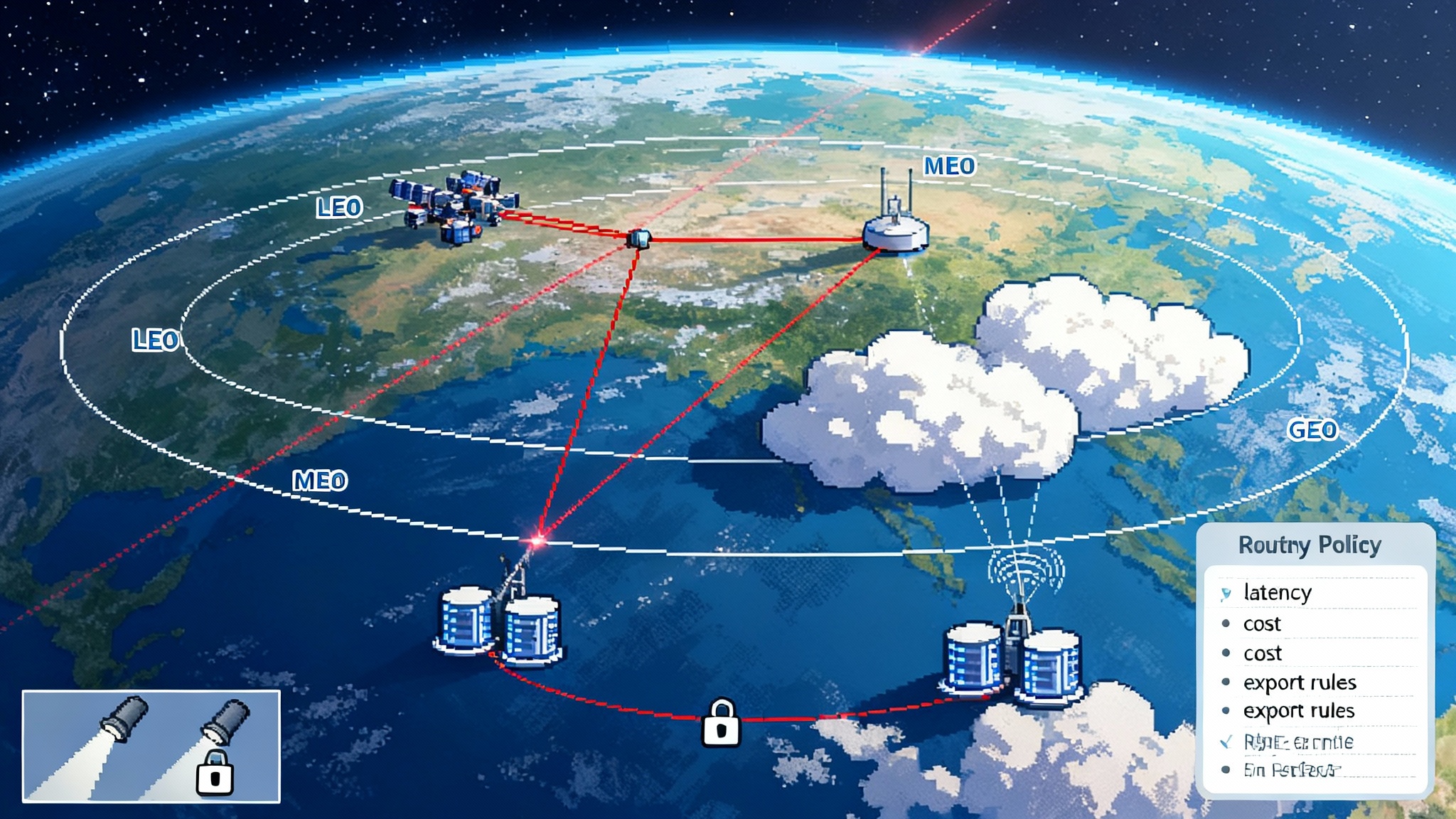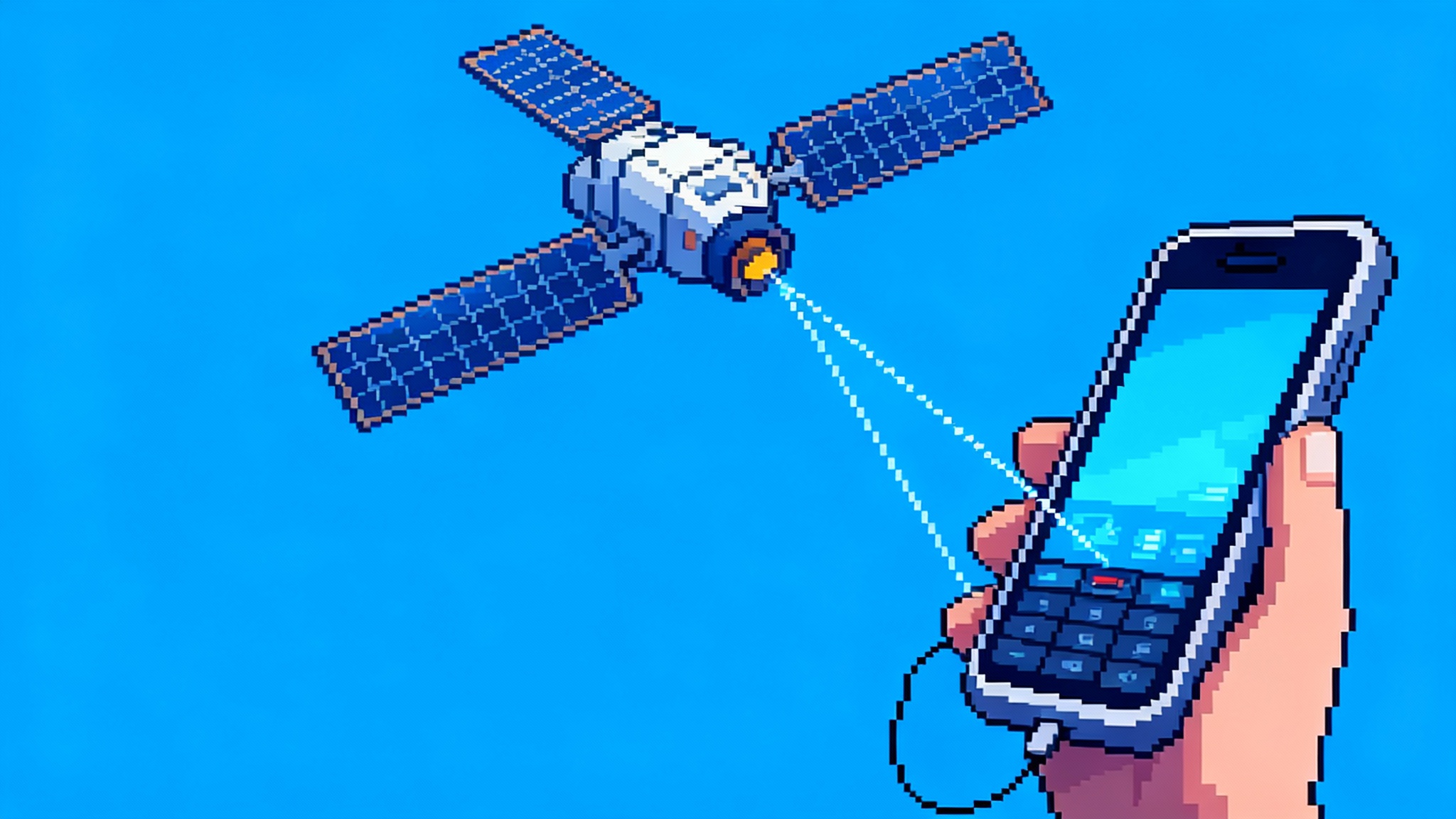After Touchdowns, the Moon Race Turns to Infrastructure
Early 2025 delivered two private lunar touchdowns and a June failure. The question is no longer can they land but how fast we can stand up power, comms, navigation, night survival, and mobility. Here is the near-term buildout.
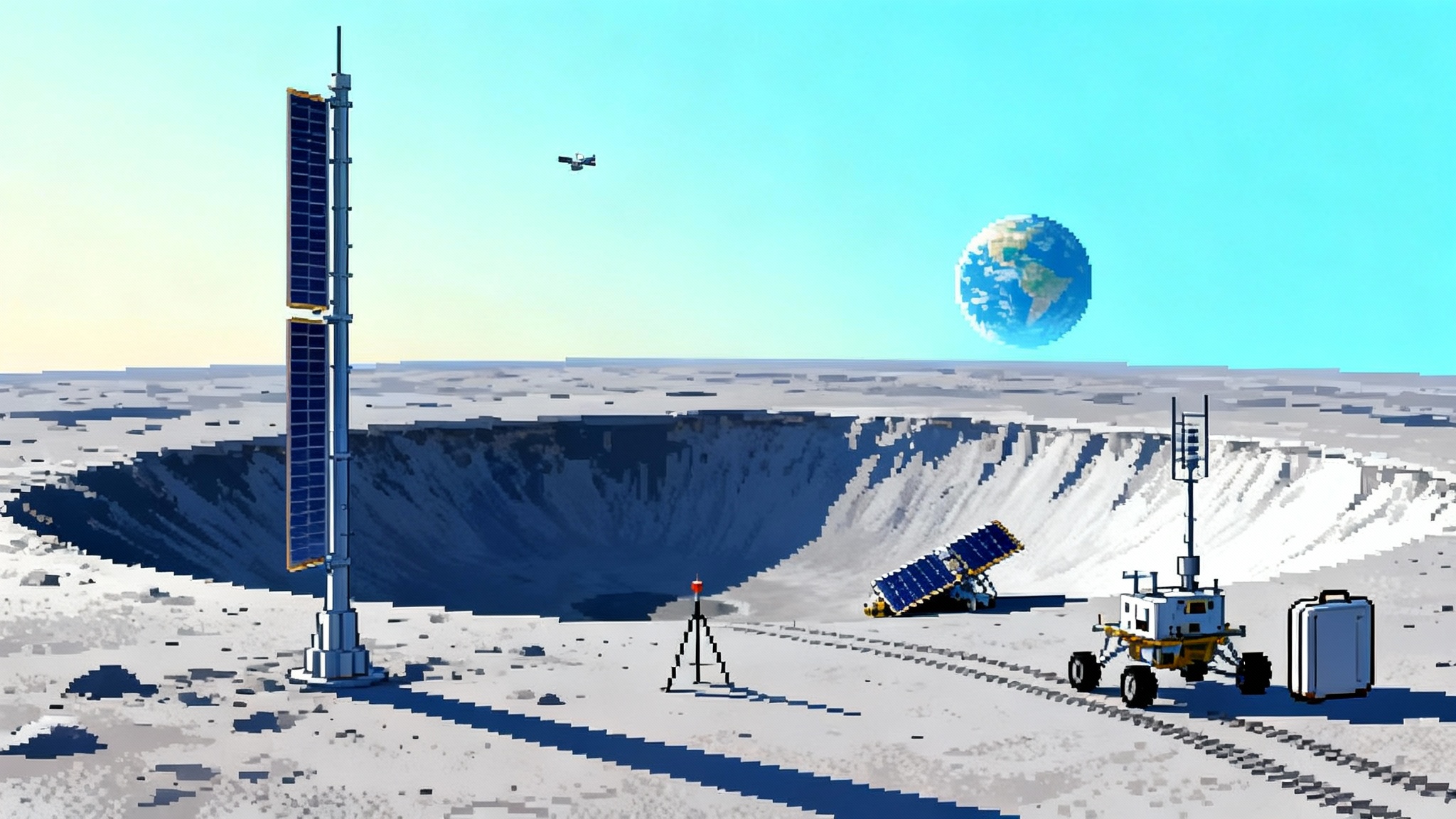
The threshold just moved
On March 2, 2025, Firefly’s Blue Ghost Mission 1 touched down upright in Mare Crisium, ran a full lunar day, and shut down gracefully at sunset. Four days later, Intuitive Machines’ IM‑2 landed near Mons Mouton at the south polar frontier, tipped on its side, and worked briefly before power dwindled. Then on June 5, ispace’s second attempt went silent during descent and likely hit hard. With those three events clustered in one quarter, the question changed. It is no longer can commercial teams reach the surface. It is how fast can we build the basic infrastructure that makes lunar operations routine. (nasa.gov)
What follows is the early buildout map: power, communications, navigation and timing, thermal and night survival, and mobility. These are not abstract wish lists. They are tied to hardware already flown, standards published this year, and missions on the manifest over the next 6–12 months.
Pillar 1: Power that scales and survives
Near-term priorities are about two things: getting more watts per delivered kilogram and making those watts available when the Sun is not.
- Vertical solar arrays at the poles. Sunlight at the south pole skims the horizon, so vertical, mast‑like arrays capture it better than flat panels. Lockheed Martin’s Vertical Solar Array Technology and Redwire’s roll‑out arrays adapted for lunar use are through key test gates and are designed to deploy to 10–20 meters, auto‑level, and tolerate dust and cold. Expect these to anchor the first relocatable “power sticks” at sites with 70–90 percent illumination. (lockheedmartin.com)
- Fission Surface Power in the queue. NASA and the U.S. Department of Energy extended Phase 1 work and are setting up Phase 2 now, with Westinghouse advancing a heat‑pipe microreactor concept. No reactor flies in the next year, but down‑selects and component tests this year matter because they lock interfaces for future surface grids. (nasa.gov)
- Smarter storage and power management. The fastest wins are better energy budgeting and thermal integration, as shown by LuSEE‑Night’s power strategy for operating science during the two‑week cold soak. Think lighter batteries, smarter duty cycles, and using waste heat from instruments to protect cells. (arxiv.org)
Bottom line: power is moving from bespoke lander panels to deployable poles and, later, steady microreactors. The first one to deliver a relocatable, quick‑plug pole with standardized connectors will define the early market for every rover and instrument that arrives after.
Pillar 2: Communications that feel like a network
Two complementary tracks are converging: LTE‑style local links on the surface and orbital relay backbones.
- LTE on the Moon actually booted. Nokia’s “network in a box” rode on IM‑2, powered up, reached an on‑air state, and exchanged telemetry before the lander died. It was not a field‑day demo, but it validated that commercial cellular gear, ruggedized for vacuum and dust, can serve as a local link for rovers and hoppers. (nokia.com)
- Relay orbiters are imminent. ESA’s Lunar Pathfinder aims to offer S‑band and UHF relay in an elliptical frozen orbit, with X‑band downlink to Earth. Depending on integration, it is targeting launch as soon as late 2025 into 2026. Expect it to become the go‑to link for far‑side and polar customers, until larger constellations arrive. (esa.int)
- Standards first, services next. NASA’s LunaNet Interoperability Specification hit Version 5 in February 2025, a quiet but pivotal milestone because it defines how lunar comms and PNT services talk to each other. Vendors can now build to a common spec and get paid to interoperate. (nasa.gov)
The practical upshot: local LTE nodes plus an orbital relay equals continuous ops without pointing fragile high‑gain dishes at Earth from every asset. That reduces risk and cost for everything else in this story.
Pillar 3: Navigation and timing that do not depend on luck
- GPS at lunar distances is real now. Firefly’s Blue Ghost carried the LuGRE payload, which locked onto GPS and Galileo signals in lunar orbit and again on the surface, producing navigation fixes roughly 385,000 km from Earth. That is the seed of an “Lunar GNSS assist” layer that cuts DSN dependence and improves landing accuracy. (asi.it)
- Beacons and retroreflectors. Landers are already dropping laser retroreflectors; IM‑2 carried one for precision ranging. Combine that with surface beacons tied to LunaNet time and you get a practical recipe for meter‑class pin‑pointing on approach and for surface assets. (nasa.gov)
Navigation is crossing from bespoke terrain‑relative cleverness to a layered service: weak GNSS from Earth plus on‑site aids and interoperable time. That lowers the landing risk premium and expands the set of safe sites.
Pillar 4: Thermal control and surviving the lunar night
Most commercial payloads still die at sunset. That is beginning to change.
- Radioisotope heaters and power. NASA’s 2023 Tipping Point award seeded an americium‑241 radioisotope system led by Zeno Power with Intuitive Machines as a partner. The goal is modular heaters and, ultimately, compact radioisotope generators that keep small assets alive through night or inside permanently shadowed regions. (globenewswire.com)
- Night survival for small rovers. Astrobotic’s SBIR work targets RHUs, long‑range radios, and mobility tweaks so CubeRover‑class platforms can last multiple lunar cycles rather than a single sprint. (sbir.gov)
- Smarter thermal budgets. Several science packages are adopting night‑first power concepts, insulating critical electronics and budgeting every watt so they can operate when it is dark and cold. That discipline will bleed into commercial platforms quickly. (arxiv.org)
If even a few small assets prove repeatable night survival in 2026, it changes revenue math for services like prospecting, mapping, and site prep.
Pillar 5: Mobility that goes beyond postcard drives
- Hoppers and micro‑rovers. IM‑2 flew a tiny hopper and the MAPP rover to pair with LTE. The lander’s posture killed the chance to test them, but the integration path is clear: light mobility plus local comms equals real traverses within line‑of‑sight of the power pole. (bell-labs.com)
- Next up: Reiner Gamma, with a rover swarm. Intuitive Machines’ IM‑3 is slated for the first half of 2026 to the Reiner Gamma swirl, carrying the Lunar Vertex rover and the CADRE swarm robotics demo. That will push multi‑robot coordination, local comms, and distributed sensing beyond a NASA lab and onto the surface. (nasa.gov)
Mobility is where the “grid” meets customers. You cannot sell site surveys, trenching, or sample logistics without reliable comms and power within a few kilometers of a landing site.
Second‑order effects you can feel already
- Insurance reprices risk. After a two‑year run of heavy space insurance losses, underwriters have raised rates and tightened terms for first‑flight and unproven tech. Firefly’s clean March landing helps the class, but IM‑2 and the June hard landing keep premiums elevated until a few more consecutive wins arrive. Expect more parametric structures and tighter exclusions for novel landing sensors. (wtwco.com)
- CLPS priorities after VIPER. NASA canceled the VIPER rover in July 2024 and spent early 2025 exploring partnerships to salvage the asset, then pivoted to alternate approaches. In practice that means more, smaller volatile‑hunting payloads like PRIME‑1 and international collaboration with missions such as LUPEX, rather than a single flagship rover. That diversifies technical risk and keeps cadence. (space.com)
The 6–12 month proving ground
Here is what is scheduled between now and mid‑2026. This pipeline will either validate the business case for a lunar services market or force a strategic reset.
- Q4 2025 to early 2026: Lunar Pathfinder relay orbiter. Targeting launch as early as late 2025 into 2026 to provide the first commercial lunar relay service. If it enters service on time, it unlocks far‑side and deep polar ops without bespoke relays. (esa.int)
- Late 2025: Astrobotic’s Griffin Mission 1. With VIPER gone, the Griffin lander is still planned to fly to the south pole on an updated manifest as early as fall 2025. Even with a mass simulator, a clean descent and surface checkout would restore confidence after Peregrine’s 2024 loss and set up higher‑value payloads. (planetary.org)
- Early to mid‑2026: Intuitive Machines IM‑3 to Reiner Gamma. A near‑side mission with Lunar Vertex and CADRE that will stress‑test multi‑asset comms, magnetic mapping, and rover operations. Success here would validate the LTE‑plus‑rover playbook in benign lighting conditions. (nasa.gov)
- 2026: Draper CP‑12 to the far side, Schrödinger Basin. This first U.S. far‑side landing brings a seismometer and heat‑flow probe and requires a relay architecture. If on time, it proves far‑side logistics and cements the relay market. (nasa.gov)
- 2026: Firefly Blue Ghost Mission 2. A combined surface delivery and orbital relay drop‑off that moves the provider from a near‑side, daylight mission to far‑side operations. Momentum here would make Firefly the first repeat commercial performer with increasing complexity. (nasa.gov)
- 2026: Blue Origin’s Blue Moon Mark‑1 Pathfinder. A tech‑demo cargo lander that tests the BE‑7 engine and precision landing, likely on New Glenn. A clean flight strengthens the heavy‑cargo lane and the future human‑class supply chain. (spacenews.com)
Stringing together two or three green checks from that list would create a market where insurers relax slightly, customers sign multi‑mission options, and standards like LunaNet move from paper to purchase orders.
What “minimum viable lunar infrastructure” looks like by mid‑2026
If the cadence holds, a realistic near‑term stack is:
- One or two vertical solar masts at a benign polar ridge with standardized DC outputs and quick‑plug connectors. (lockheedmartin.com)
- A local LTE node for rover teleop and data backhaul to the lander, plus a relay orbiter in view half the time for store‑and‑forward. (nokia.com)
- GNSS‑assisted navigation to pre‑mapped landing ellipses, with laser retroreflectors and surface beacons for final fix. (nasa.gov)
- At least one rover that can survive a sunset cycle with radioisotope heat, enabling multi‑day traverses tied to the power pole. (globenewswire.com)
That stack is enough to power and communicate with small prospecting tools, do meter‑scale surveys, trench a bit, and stage parts for the next lander. It is modest, but it is the difference between one‑off stunts and a service economy.
What could break the thesis
- Two or more high‑profile lander losses in a row. That would keep premiums high and delay customer commitments.
- Relay delays. If Lunar Pathfinder slips hard or far‑side relays do not materialize, anything beyond the near‑side becomes bespoke again. (esa.int)
- Thermal dead ends. If night survival remains elusive, many business models collapse into 14‑day sprints with long dormancy gaps.
- Standards drift. If teams ignore LunaNet and roll their own, integration and cross‑support costs balloon. (nasa.gov)
The takeaway
Early 2025 did not give us a flawless batting average. It gave us something more valuable: evidence that back‑to‑back commercial Moon arrivals are now part of the operating rhythm, that surface LTE can power up, that GPS‑class signals can guide you at lunar distance, and that the relay era is close. Build power, comms, navigation, night survival, and mobility on that rhythm, and the next 12 months will look less like experiments and more like a supply chain.
